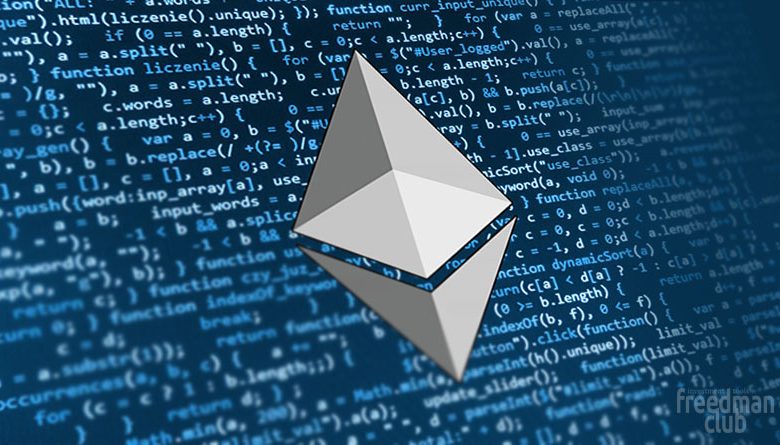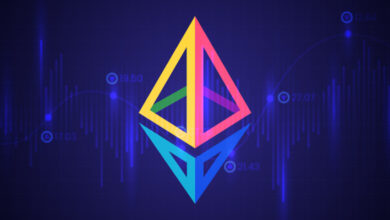Ethereum Final Test Marked Successful Prior to Anticipated Update
Ethereum is moving closer to adopting a proof-of-stake model for its network, which is less energy intensive than the existing proof-of-work method.

Ethereum just ran a final rehearsal ahead of a years-awaited upgrade, which is considered to be one of the most important events in the history of crypto.
The final test took place Wednesday at around 9:45 p.m. ET, according to CNBC.
Ansgar Dietrichs, a researcher with the Ethereum Foundation, said in a tweet that the most relevant metric for success when it comes to a dry run like this is looking at time to finalization. He called it “another successful test”.
Also, a research associate from Galaxy Digital pointed out that the participation rate after the test merge dropped, and it looked like there may have been an issue with one of the clients — but overall, it worked.
“A successful Merge = chain finalizes,” Christine Kim wrote in a tweet, adding that we are likely to see similar types of issues with the upgrade on mainnet, but the point is, the Merge worked.
The timing of the upgrade will be discussed at a meeting of Ethereum core developers on Thursday. Previous guidance indicated that the merge should go into effect on September 19.
Ethereum’s transition has been repeatedly pushed back for the last several years. Core developers tell CNBC that the merge has been slow to progress, in order to allow sufficient time for research, development and implementation.
Here’s what happened
One of ethereum’s test networks, or testnets, called Goerli (named for a train station in Berlin), simulated a process identical to what the main network, or mainnet, will execute in September.
Testnets allow developers to try out new things and make necessary tweaks before the updates roll out across the main blockchain. Wednesday night’s exercise showed that the proof-of-stake validation process substantially reduces the energy necessary for verifying a block of transactions, and also proved that the merger process works.
“Goerli has this badge of a bottom-up testnet,” said Josef Je, a developer who worked with the Ethereum Foundation and now runs a permissionless peer-to-peer lending platform called PWN.
Je added that it was the most used testnet at this point, and that proof of stake on Goerli will be almost identical to how things will run on the mainnet.
The Ethereum Foundation’s blog echoed that assessment, saying that Goerli is “the closest to mainnet, which can be useful for testing smart contract interactions.”
Spotting the bugs
Tim Beiko, the coordinator for ethereum’s protocol developers, told CNBC that they typically know “within minutes” whether a test was successful. But they’ll still be looking out for many potential configuration issues in the hours and days ahead so they can quickly fix them.
“We want to see the network finalizing and having a high participation rate amongst validators and also make sure we don’t hit any unexpected bugs or issues,” said Beiko.
The easiest metric to track is participation rate, meaning how many validators are online and doing their duties, Beiko said. If the numbers go down, developers will have to figure out why.
Another key issue relates to transactions, Ethereum processes transactions in groups known as blocks. Beiko said one clear indicator the test went well will be if the blocks have actual transactions in them, and aren’t empty.
The last major check is whether the network is finalizing, meaning that more than two-thirds of validators are online and agree to the same view of the chain history. Beiko says it takes 15 minutes in normal network conditions.
“If those three things look good, then there’s a long list of secondary stuff to check, but at that point, things are going well,” said Beiko.
‘More accessible’
Since December 2020, the Ethereum community has been testing out the proof-of-stake workflow on a chain called beacon, which runs alongside the existing proof-of-work chain. Beacon has solved some key problems.
Beiko said the original proposal required validators to have 1,500 ether, a stake now worth around $2.7 million, in order to use the system. The new proof-of-stake proposal lowers the bar, requiring interested users to have only 32 ether, or about $57,600.
“It’s still not a trivial sum, but it’s a much more accessible system,” said Beiko.
There have been other key developments leading up to Wednesday’s test. In June, Ethereum’s longest-running testnet, known as Ropsten, successfully merged its proof-of-work execution layer with the proof-of-stake beacon chain. It was the first major dry run of the process that the mainnet will undergo next month, should all go according to plan.
Beiko said that testing the merge has allowed developers to ensure that the software running the ethereum protocol was stable and “that everything built on top of the network was ready for the transition.”
Now that the test went well, and everything seems to be going smoothly, the crypto space has even more faith in The Merge, hoping to take the Ethereum network to another level.




